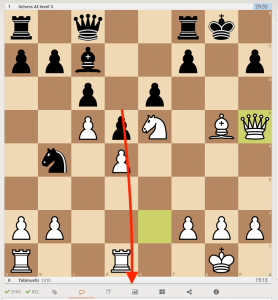I have other hobbies besides chess, including playing an online Scrabble-like game called Lexulous. Lexulous gives players ratings in a manner adopted from chess, and as in chess, when two people play, there is a winner and a loser. But I have yet to see someone proclaim in a Tweet: “I’m quitting Lexulous.”
In the chess Twitterverse, however, it is not unusual to see posts in which discouraged players declare that they are leaving the game. There are various flavors of this. The former world chess champion Magnus Carlsen has not quit playing, although he did step down from being world champion. As people have asked, “Who does this in any other sport?” No one. Levy Rozman, known widely for his chess YouTube channel GothamChess, recently declared that he was quitting playing in chess tournaments. Interestingly, he still plays chess online and exults in the high rating he is achieving without putting tournament-level pressure on himself.
Of course, if I were to quit chess, it would not be newsworthy. I would just be another person whom the black and white armies had driven to a place of silent desperation. But I would not be alone. I saw the following question in an online chess forum: “Should I quit chess because it makes me depressed?” Another forum post says, “I get very nervous when playing, I feel as if my whole life is on the line with each move and that each loss is another failure.’”
Unfortunately, I can relate to these feelings, and I imagine that many other chess players–especially beginners–can relate to them as well. What to do? I don’t want to quit chess because it makes me depressed. I want to quit getting depressed about my chess. I want to rid myself of the feeling that “my whole life is on the line with each move and that each loss is another failure.” But sometimes I get to feeling badly enough about my game that I avoid playing, unless it is with a very trusted friend or in what I have found is a safe environment (and even there, the negative feelings can still arise). Playing less chess does not usually help one’s game, however, especially if one is an inexperienced player. Nor does playing less inure one to losing, in my experience.
Listening to chess podcasts and reading chess tweets has given me some comfort, however. I used to think that the people who played chess, especially those with online personas, must be a thick-skinned bunch who did not suffer nearly as much as I did from losing. But two prominent podcasters–Daniel Lona of the Chess Experience and Kevin Scull of Chess Journeys–are quite open about their chess frustrations on their shows and on Twitter. As reassuring as it has been to see that they suffer, too, I am sorry to learn that even if I become much better at chess, as they are, my despair may still be with me. But I will persist. Which means that I will also probably continue to ponder this issue here.
Recommendation: I already couldn’t see out how Ben Johnson managed to do all the things he was doing (most notably, the Perpetual Chess family of podcasts), and now he has added something new: the Perpetual Chess Link-Fest, a blog/newsletter in which he compiles links to good online chess content. This week’s edition happens to include links to a couple of blog posts about chess improvement.
















